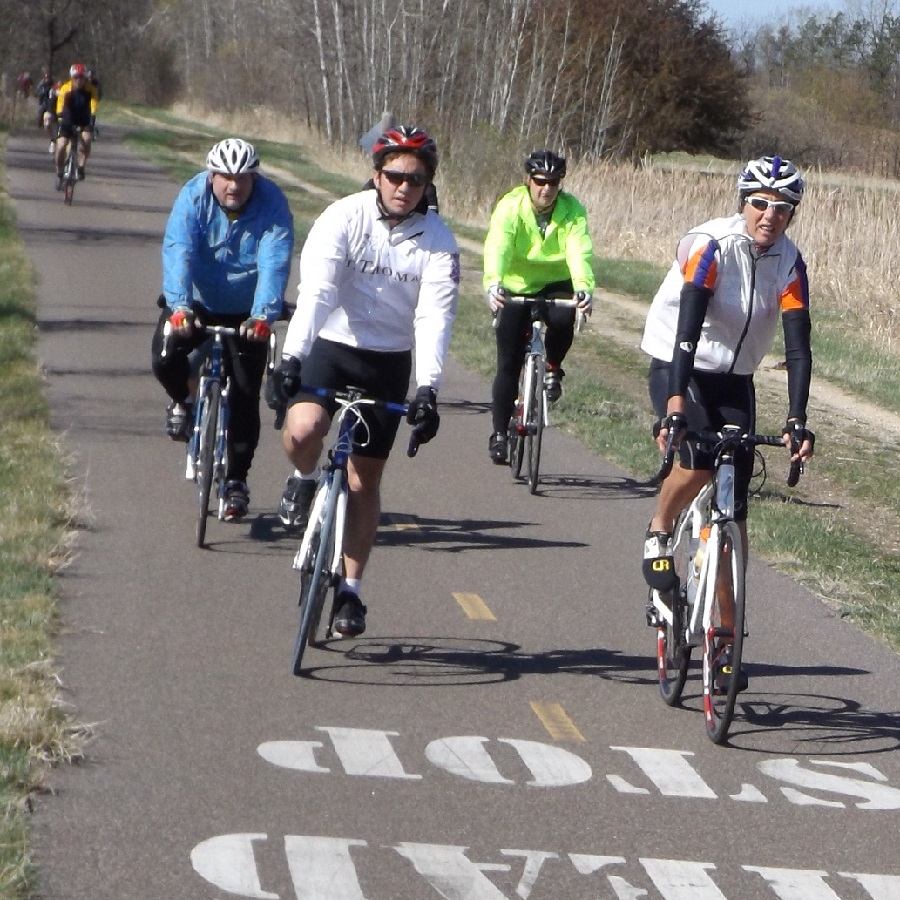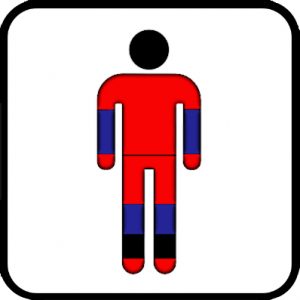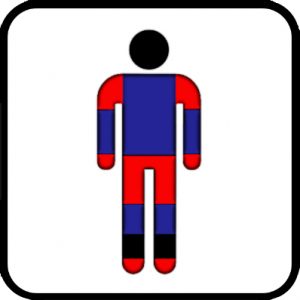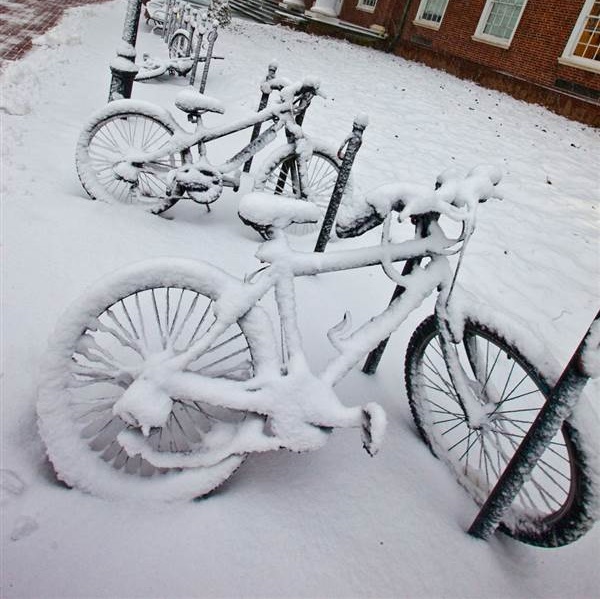by John Brown, HaveFunBiking.com
With winter showing signs of ending and roads soon beginning to clear of snow and ice, we all look forward to venturing out into the world on two wheels. The following should help you find the right cycling clothes for that #NextBikeAdventure. Even though the weather is improving, true summer temps are still a ways off, so take a look at these tips.
Layering Up with Cycling Clothes

As we swing closer into spring, finding the right cycling clothes for an early season bike ride is important as temperatures fluctuate.
Your perceived temperature as well as the actual ambient temperature can change while you ride. In order to get the most flexibility, and stay comfortable, layered clothing offer the most options. Listed below are the many items that make up a complete wardrobe of cycling clothes. However, depending on your geography or personal preferences, some items may not be required.
-Jersey
A cycling jersey isn’t a necessity for riding, but it sure does make things comfortable. Jerseys come in lightweight sleeveless versions for the hottest summer days, or insulated long sleeve versions for cold weather riding.
-Base Layers
They come in short and long sleeve versions. They’re usually made of a polypropylene material that keeps you dry by moving moisture off your skin quickly.
-Shorts
Cycling shorts are the most important piece of clothing when it comes to comfort. There are tight versions as well as baggy ones, but all have a pad to help make your saddle more comfortable.
-Arm Warmers
Arm warmers fit snugly from your wrist to just below your shoulder. The ability to roll them up or down while you ride makes them ideal for rides that have a large change in temperature.
-Knee Warmers
Like arm warmers, knee warmers offer great flexibility on days with a large shift in temperature. They can be easily packed in a jersey pocket for use when needed.
-Gloves
Gloves range from half fingered summer versions to heavy, windproof, winter versions and everything in between. The most important thing about glove is to find something that fits comfortably.
-Tights
Tights are an essential piece of clothing if you want to be comfortable riding as the temperature drops. They help you retain body heat while not being bulky and interrupting your ability to ride comfortably.
-Jackets
Cycling jackets are noticeably thinner than a standard winter jacket. The reason they don’t need as much loft is because as you exercise, you create enough heat. Most good cycling jackets use a windproof material to stop heat from being pulled off your body by the air moving around you as you ride. Some higher end jackets are windproof as well as waterproof.
-Wind Breaker
As it sounds, this jacket or vest’s main job is to stop the wind from pulling heat away from your body. They are usually lightweight and can be packed into a very small bag for easy transport.
-Hats
Cycling caps are usually thin enough to fit under a helmet and vary in insulation depending on the material used. Warmer caps are usually made from fleece with a windproof membrane, while summer caps are made of nylon.
-Booties
Booties are thick neoprene covers designed to fit over your shoe and ankle. They do a great job of insulating while still allowing you to wear you comfortable cycling shoes. If you plan to do a lot of winter riding, you may want to invest in a dedicated winter shoe, rather than booties.
What to Wear
Now that we know about cycling clothes, let’s talk about how they fit into the game. Everyone’s temperature threshold is different, so you may find it comfortable to wear slightly more or less clothing than recommended below. After a full season of riding, you will figure out exactly what works for you and where you may need some more clothing options.
Above 65 Degrees

Jersey, shorts, gloves, and socks should be comfortable.
65 Degrees

Add knee warmers, arm warmers, base layer, and light full finger gloves.
55 Degrees

The addition of a vest keeps your core warm.
50 Degrees

Trade the arm warmers for a long sleeve jersey and swap out to thicker socks and gloves.
45 Degrees

Swap knee warmers for light tights, short sleeve base layer for long sleeve, and add a hat.
40 Degrees

A wind breaking coat and booties keep you toasty.
35 Degrees

Trade light tights for winter tights, light hat for winter cap, and full finger gloves for winter gloves.
30 Degrees

A heavy winter coat replaces the windbreaker and long sleeve jersey.
Stay Dry
With the simple breakdown of cycling clothes above you should be able to comfortably ride throughout the spring and deep into winter. If it rains, all bets are off. With rain on top of cold, the most important thing is to stay dry. Most synthetic insulating fabrics will still work when wet, but the wet greatly diminishes their ability to keep you warm.
In the rains of the fall and early spring staying dry can be a difficult task. The best way to stay dry is to wear waterproof clothing. A jacket and pants are a great way to start, but socks and gloves make the outfit complete. Before you go out and just buy anything labeled “waterproof”, understand that all waterproofing is not the same.
In their most basic form, a lot of materials are waterproof, but as soon as they are perforated with stitching, zipped closed with generic zippers, and left to be loose at all the cuffs, their waterproofing goes out the window. On top of the issue with letting water in, basic waterproof materials don’t let water vapor out. It’s just as bad to get soaked through with sweat as with rain as far as insulation is concerned.
-Keep Water Out
To keep water out, look for waterproof cycling clothes that have sealed seams or welded seams (see image). Pay close attention to the zipper. Look for waterproof zippers (pictured) or large flaps that prevent water from driving through the zipper. Make sure all the cuffs are adjustable enough to be snugged against your skin.

Examples of cycling clothes with taped seams (Left), welded seams (Center), and a waterproof zipper (Right)
-Let Sweat Out
To let the sweat out, waterproof materials should also be breathable. Breathable means that water from the outside cannot penetrate the fabric, but that any water vapor (sweat) being produced by your body, can escape through the fabric. Breathable fabrics work because water vapor is smaller than water droplets. To breath, the material will be perforated with holes small enough to stop water droplets from getting in, but large enough to allow water vapor to escape. Using a breathable material in tandem with base layers designed to pull moisture off your skin is a sure fire way to stay dry and warm.
You cannot beat the changing scenery of fall riding or the feeling of rediscovering riding in the spring. Hopefully, with these tips and a little experimentation, you will find comfort and enjoyment riding outside, even when the weather is cool.

